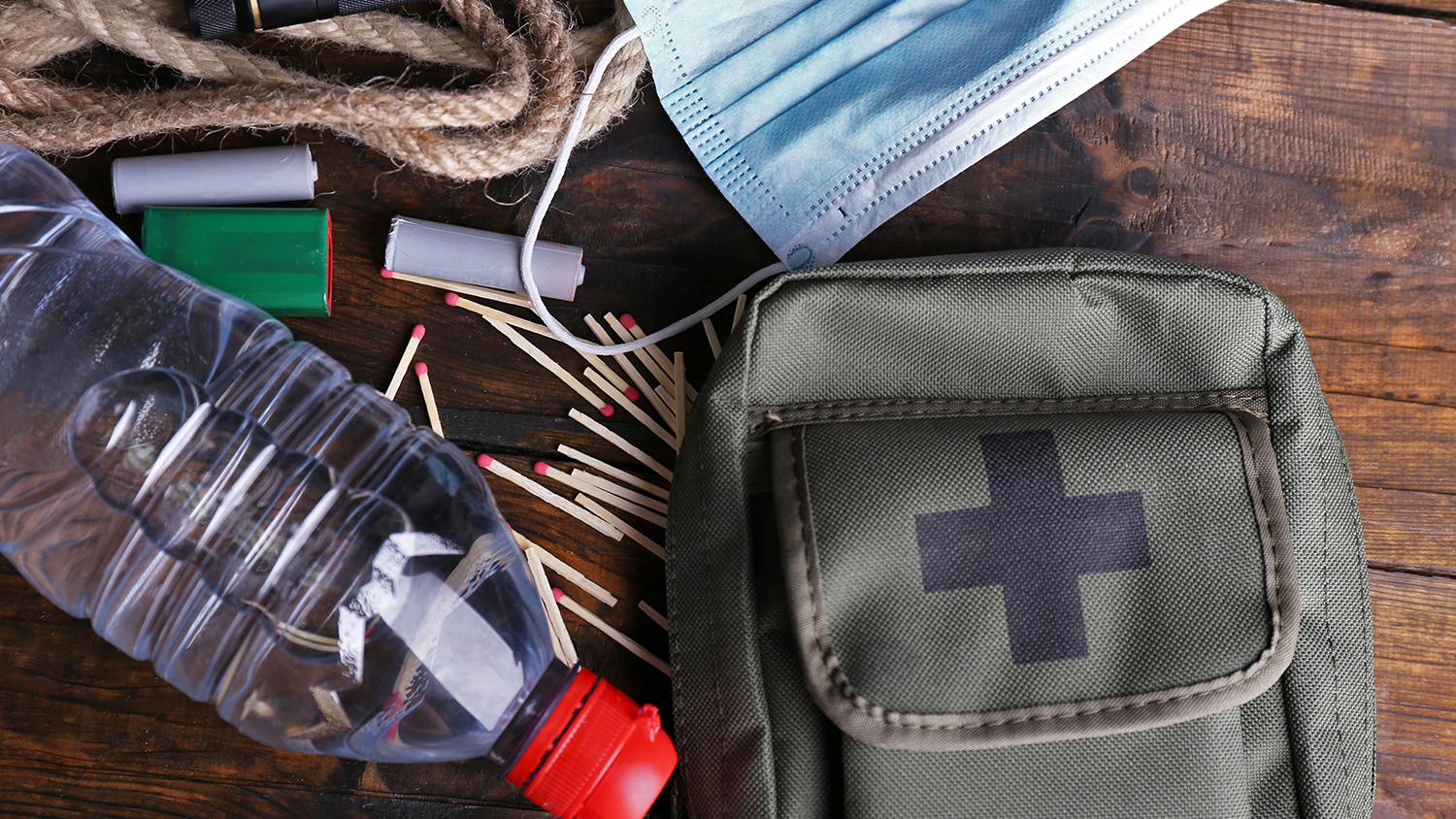Q. I want to buy some ready-made emergency kits for my home and car (so that I can be prepared for the Big One that everyone is talking about so much), but I want to avoid gross chemical-laden emergency “meals” and off-gassing PVC ponchos. Can you tell me who makes the most eco-friendly and healthy emergency kits?
Sue
Seattle, WA
A. Dearest Sue,
A true emergency is not the time to worry about whether your meals are organic or your raingear is made from biodegradable plastic. Should life ever really go south, I’m guessing even Al Gore himself wouldn’t give a fig about such things. But there is a time to worry about it, and it’s right now, before the monster earthquake (or tornado, or hurricane, or plague of locusts) hits – so you’re right on track. As long as you’re taking the time to prepare for some serious trouble, why not put a little extra thought into making your prep as sustainable as possible?
You asked who makes the eco-friendliest emergency kits, and I am going to interpret that question literally and say: You do, Sue! While you certainly can shop for ready-made kits, you’ll likely do better by assembling your own. That way, you can stock up with exactly what you need, choose the greenest options, and probably save some green, too. Hey, if you want something done right, do it yourself (with a little help from yours truly, of course).
Building your own survival kit needn’t be a terrible chore. The friendly disaster-response folks down in D.C. have already done a lot of the legwork for us: Check out these pages from the CDC and FEMA for detailed lists of emergency items to have on hand. Many of these items — such as sturdy shoes or medication — lack an obvious environmental dimension. So let’s focus our conversation on those that have one.
One such item is food, as you noted, Sue — at least three days’ worth. And while you might not be dining on farm-fresh veggies in the immediate aftermath of the Big One, neither must you resign yourself to Spam for breakfast. Instead, stock up on healthy (and organic, if possible) versions of shelf-stable snacks: Think granola, crackers, nuts, dried fruits, peanut butter, oatmeal, jerky, soup packets, and energy bars. For more complete meals, think like a camper and grab a few dehydrated, just-add-hot-water dinners. This brand, for one, makes organic dried meals, and this one sells organic dehydrated fruits and veggies. And if you’re up for a fun kitchen project, you can always dry a few of your own recipes in a regular oven.
Canned food is another useful emergency staple, so consider tossing in some canned soup, fruits, and veggies (don’t forget the can opener). It’s true that most cans have BPA or other potential endocrine disruptors in their linings, but we’re talking a real-deal emergency here; if it’s more affordable or just plain easier to line your shelves with canned items, you have my permission not to worry about that for a few days. (If that’s not enough, there are always glass jars.) Round out your stash with a camp stove and fuel for heating water – and speaking of water, head over here for my thoughts on that.
Next up: plastic shelter gizmos. You’ll find emergency or space blankets on most disaster lists because they’re small, lightweight, cheap sources of warmth when the heat goes out. Typically made of mylar, a shiny type of polyethylene plastic that reflects body heat, emergency blankets are a smart idea for all of the above reasons, even if they’re not always recyclable – safer plastics like PE have their uses, after all. And I second your reluctance to hide out from the rain in a toxic PVC poncho, but luckily, these too can be found in polyethylene. (Or just pack a few old rain jackets in your kit; every Seattleite I know has a few.)
Now let’s talk Armageddon electronics, Sue. You’ll want to include at least a radio and a flashlight, and I recommend getting models that charge via a hand crank so you don’t have to worry about batteries or chargers (or carbon emissions!). If you prefer something a little more whiz-bang, this fancy gadget is a radio and flashlight in one that charges with a crank, solar panel, or battery. Add a small solar charger to power up your phone and some beeswax candles for mood lighting and you’ll be in good shape, even in a days-long blackout.
Now, this is just the start of a complete emergency kit; see those government links above for that. But it should get you started in crafting your personalized sustainable survival toolbox (mine has a few more jellybeans, for example – you know, for morale). Do your best to keep it green, but don’t obsess too much over the details. I’d rather have you safe and sound than skip something essential because it didn’t have the perfect enviro cred.
Preparedly,
Umbra



